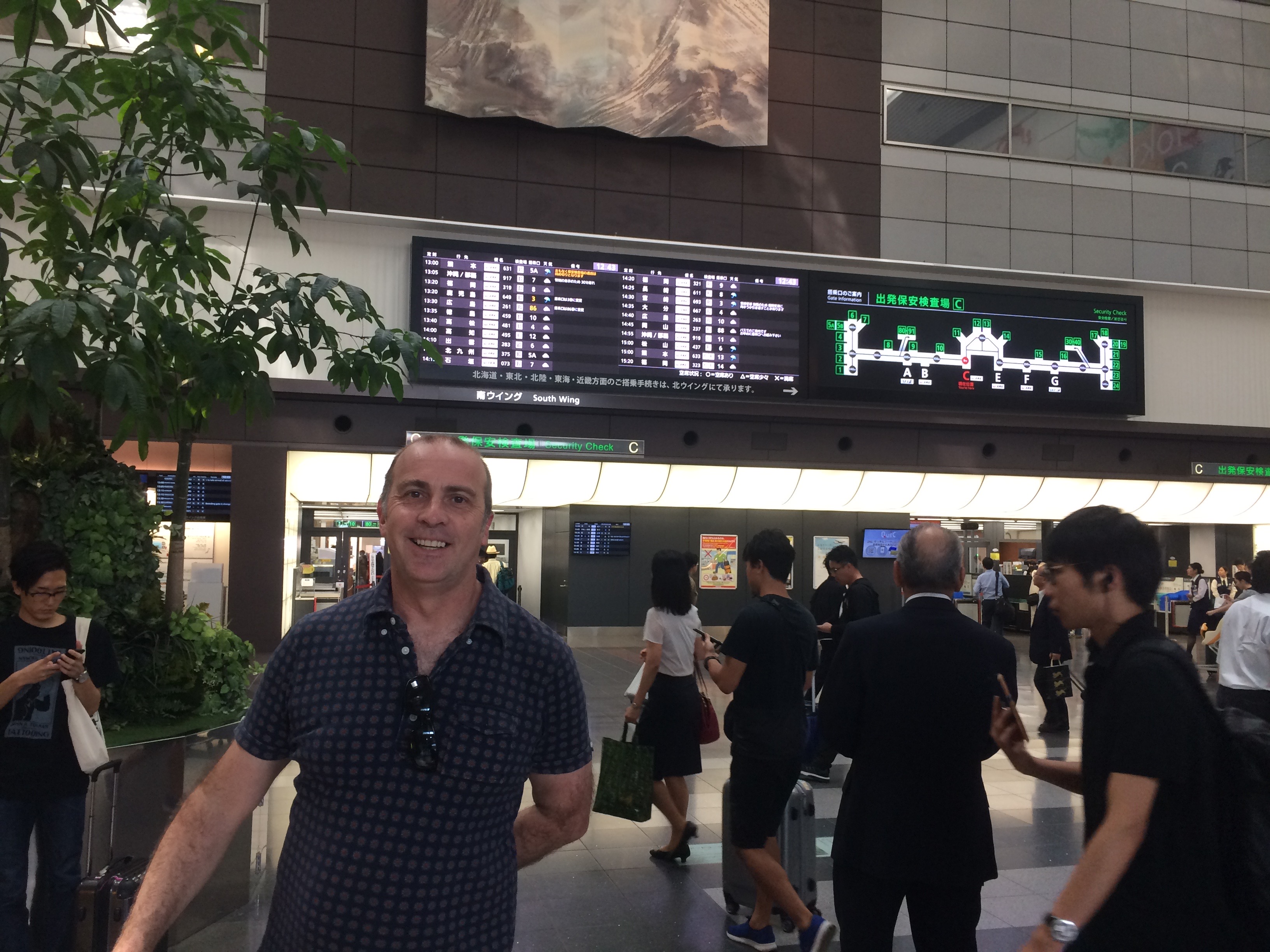 JAL became the 97th airline, I have travelled with, 49 years since my first ever air flight. I have a goal of having flown 100 different airlines by my half-century anniversary of flying in May 2018*.
JAL became the 97th airline, I have travelled with, 49 years since my first ever air flight. I have a goal of having flown 100 different airlines by my half-century anniversary of flying in May 2018*.

Booking
Japan has several major airlines. If I had been longer in Japan, I would have liked to sample them all! I chose to fly Japan Airlines (JAL), flag carrier airline of Japan and its second-largest carrier because I wanted to add another airline to my One World collection!
Their main rival is ANA (All Nippon Airways) Japan’s largest-they also own Air Japan and low-cost carrier Vanilla Air. Skytrax gives them a five star rating with passengers awarding them an 80% score. ANA owns Air Japan and low cost carrier Vanilla Air (which started life as Jetstar) and jointly owns Peach Aviation with two other partners
There are several other low cost carriers In Japan:
- AirAsia Japan which is joint venture with AirAsia Malaysia and Japanese partners
- Skymark -an independent low-cost carrier (90% rating)
- Spring Airlines Japan 33% owned by the Chinese low-cost carrier of the same name with the remainder held by Japanese investors
- Jetstar Japan which JAL shares ownership of with One World Partner Qantas and two other investors
A useful tip is that Japanese airlines offer special passes and tickets for international visitors which can provide quite significant savings. Our fare for Tokyo to Hiroshima ended up being just over $USD100. This was much cheaper than the standard fare and the rail fare.
JAL advised us we could not choose a seat at the time of booking with our special tourist fare. They did record frequent flyer numbers.
Check in: 9/10
JAL does not have an online check-in for domestic flights. They have automated kiosks at the airport or check-in staff.
I allowed 90 minutes to travel from our hotel to check in, the Lounge.

We boarded an airport train at Tokyo’s Shinagawa station at 12:22pm reaching the check-in area of the domestic terminal at Haneda just 21 minutes later at 12:43pm.
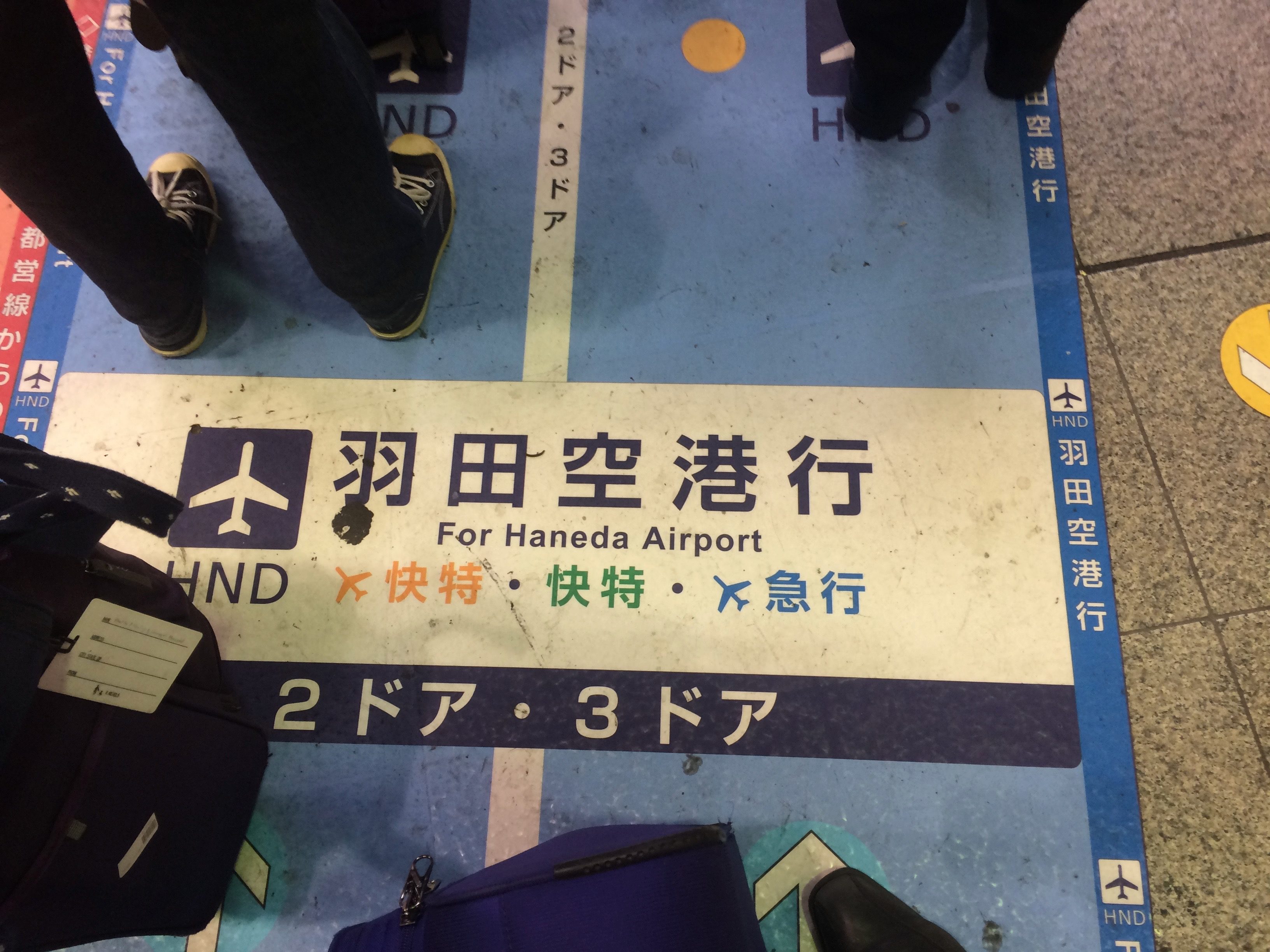
Every detail in Japan seems meticulously planned
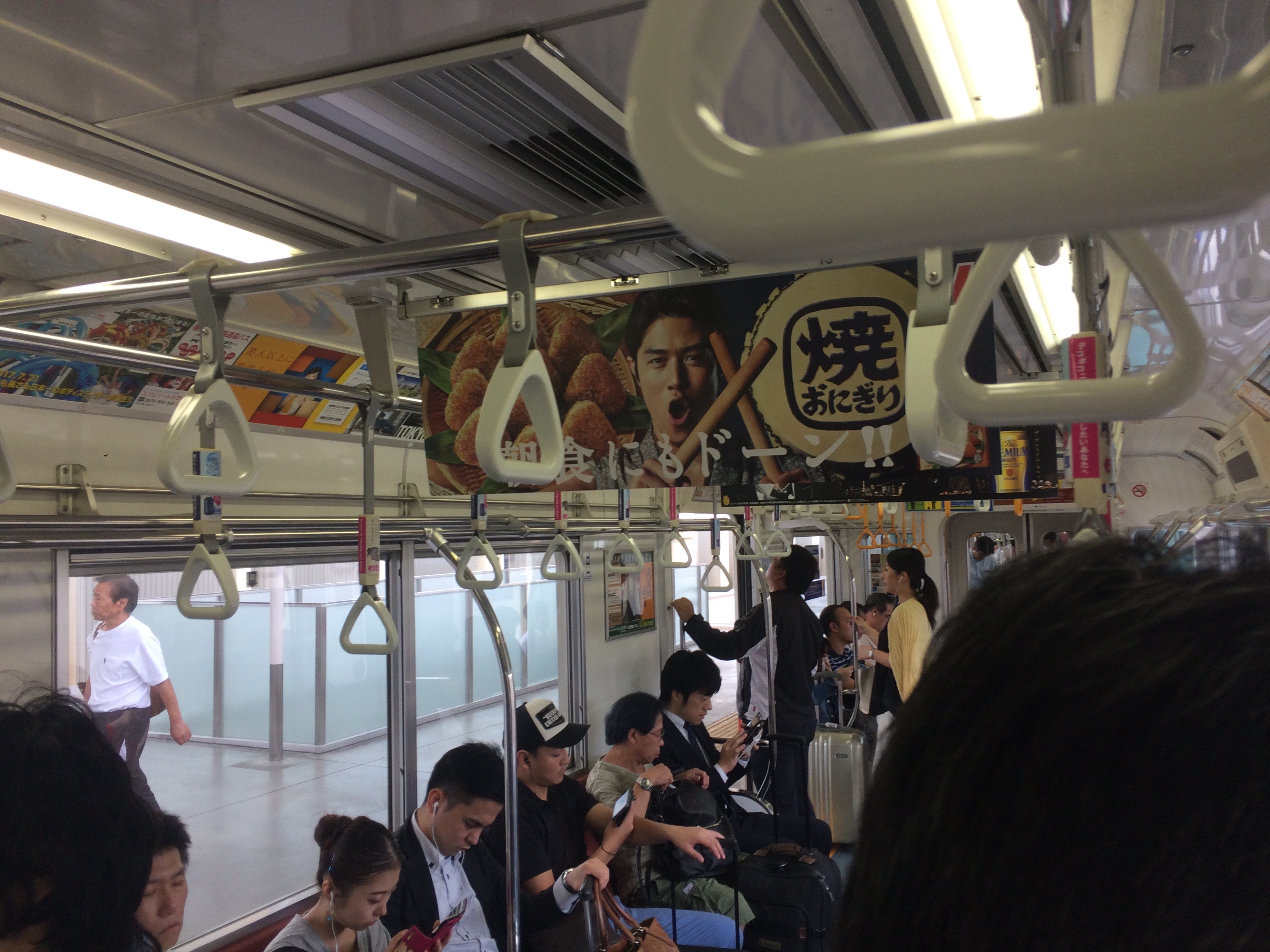
It is a very easy walk into the airy terminal from the airport railway station.
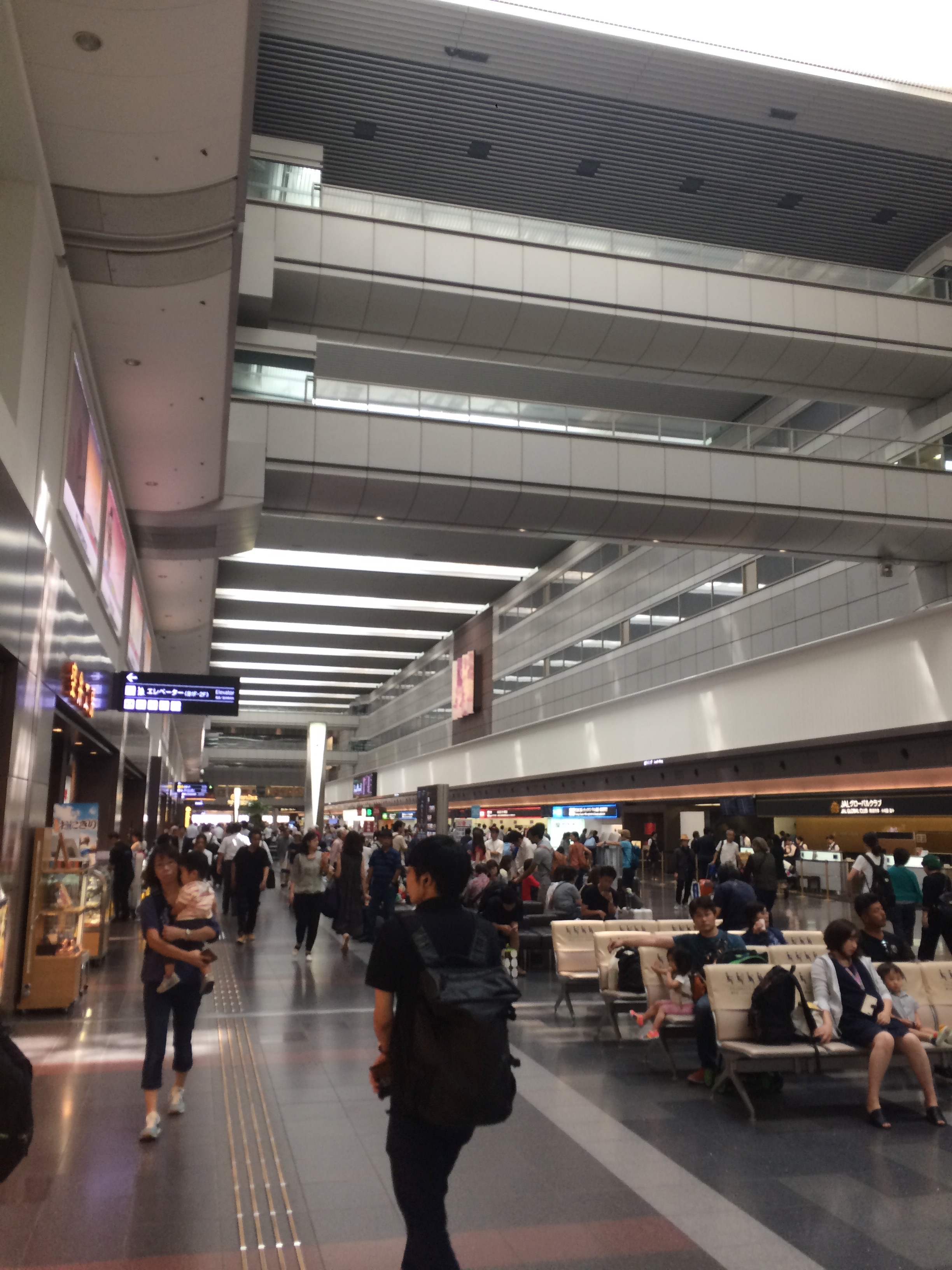
We easily discovered the Premium Check-in area and joined a very short line where we were personally ushered to the counter by a smiling attendant. Check-in, including choosing emergency exit seats was completed by 12:48pm. I had been in the airport for under five minutes! 
The efficiency did not stop here for the Premium security line was right next door to the check-in area.

We were through security in it is minutes. At the other side, the lounge entrance was immediately to our right. We were seated in the lounge by 12:54.
This means that the entire process from the station next to our hotel to the lounge took an extraordinary 32 minutes! One of the fastest check-ins I have ever experienced!
Interestingly, the boarding pass was smaller than the standard size.
Lounge: 7/10
JAL has two lounges:
- Sakura Lounge for first class passengers and One World Sapphire or Emerald status holders
- Diamond Premier for first class passengers and One World Emerald status holders

Art work in lounge
We were ushered into the Diamond Premier, a small lounge which I found underwhelming. Unfortunately, we spent more time there than I intended to due to our superlative check-in and a ten-minute delay in departure. But what the heck! This was a Japanese airport and I was on holidays!
There were three selling features of the JAL Sakura lounge:
Firstly, It looks very sharp. The lounge is “zoned” with an area with bar stools near the food and drink area, some open lounge chairs and some enclosed seating areas. There is also a small “library”. 
Secondly, the ambience is helped by the ban on mobile phone usage. The lounge has small rooms which you can use to make or receive calls. People strictly adhered to these and the only sounds in the lounge were hushed conversations. I would love to see this in more lounges globally.
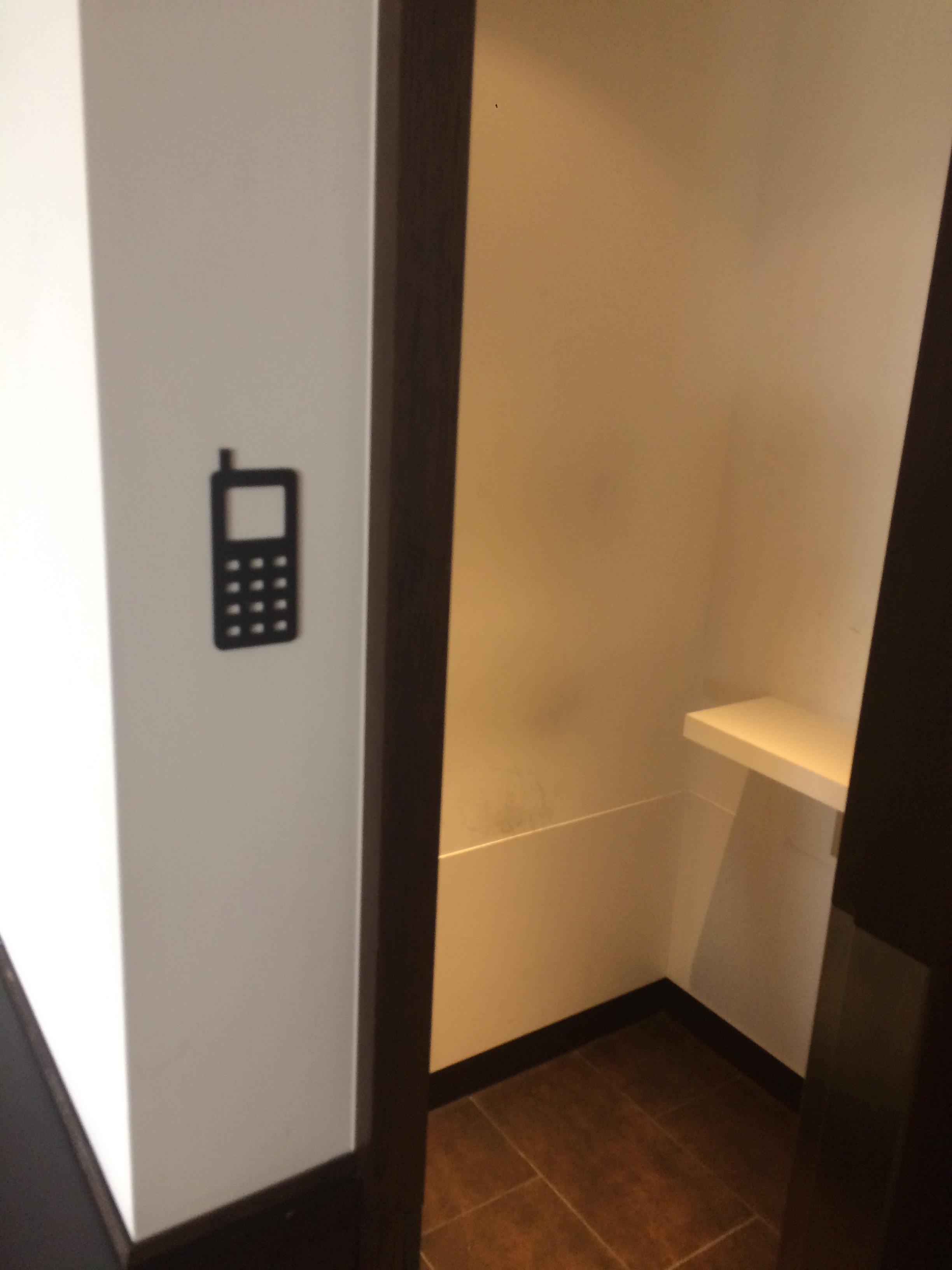
Finally, the view of the tarmac and busy Haneda traffic were absorbing 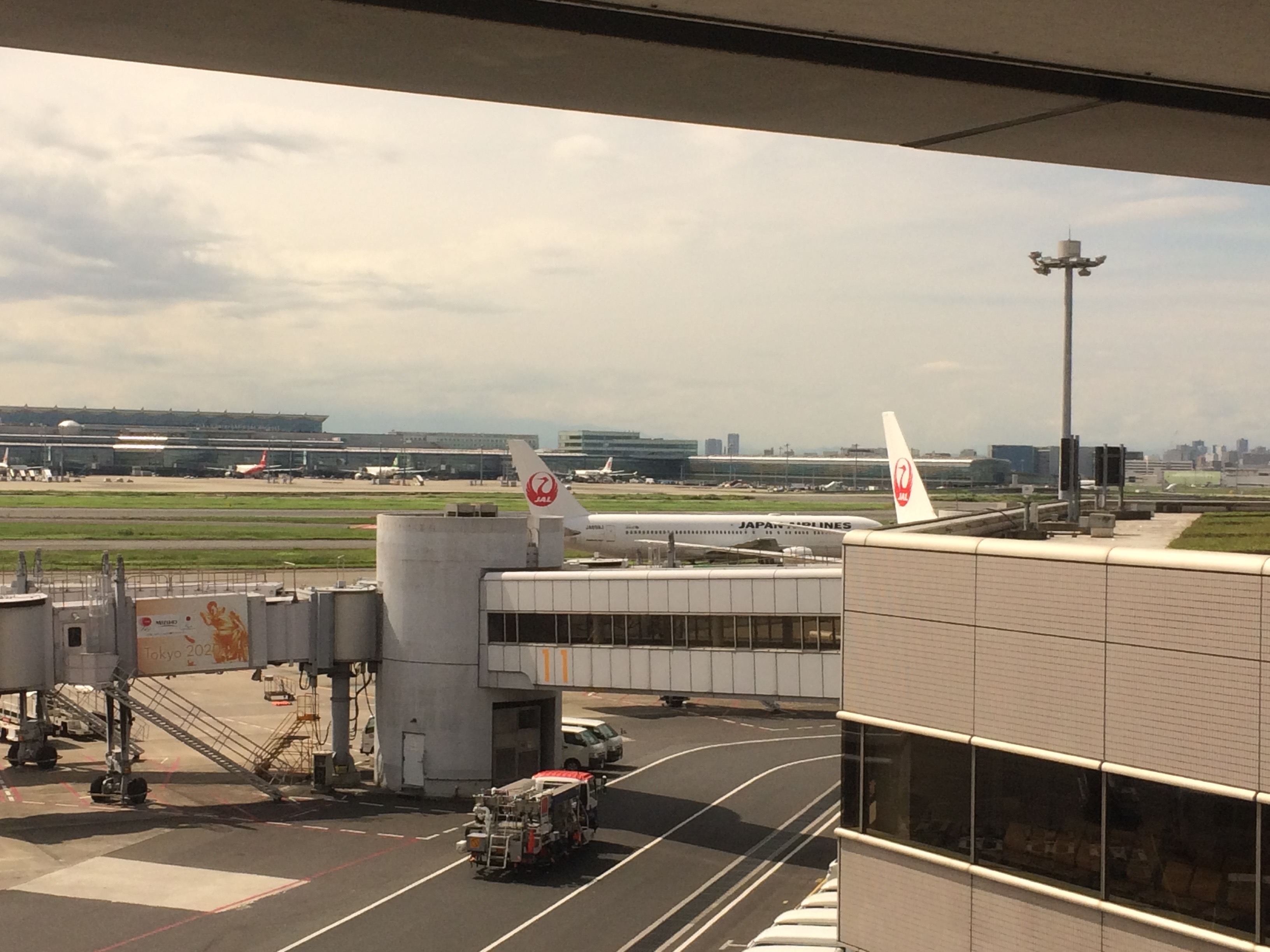
There were three massage chairs

 Food selections were extremely limited compared with a Qantas premium domestic lounge in Australia. There were a few bread items and two choices of soup. The lounge is proud of their signature curry buns.
Food selections were extremely limited compared with a Qantas premium domestic lounge in Australia. There were a few bread items and two choices of soup. The lounge is proud of their signature curry buns.

Internet was good. There are no showers.
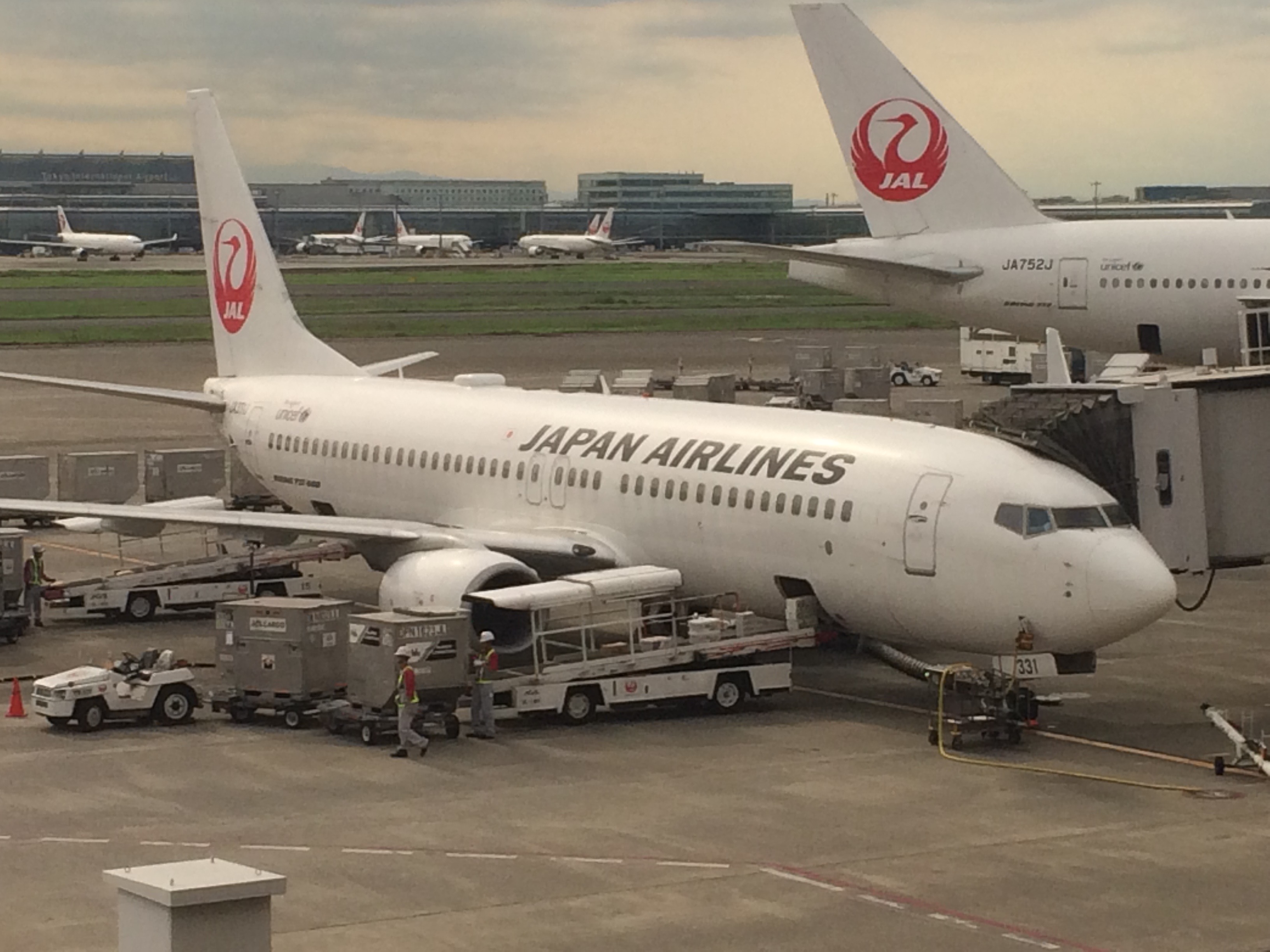
Boarding: 10/10
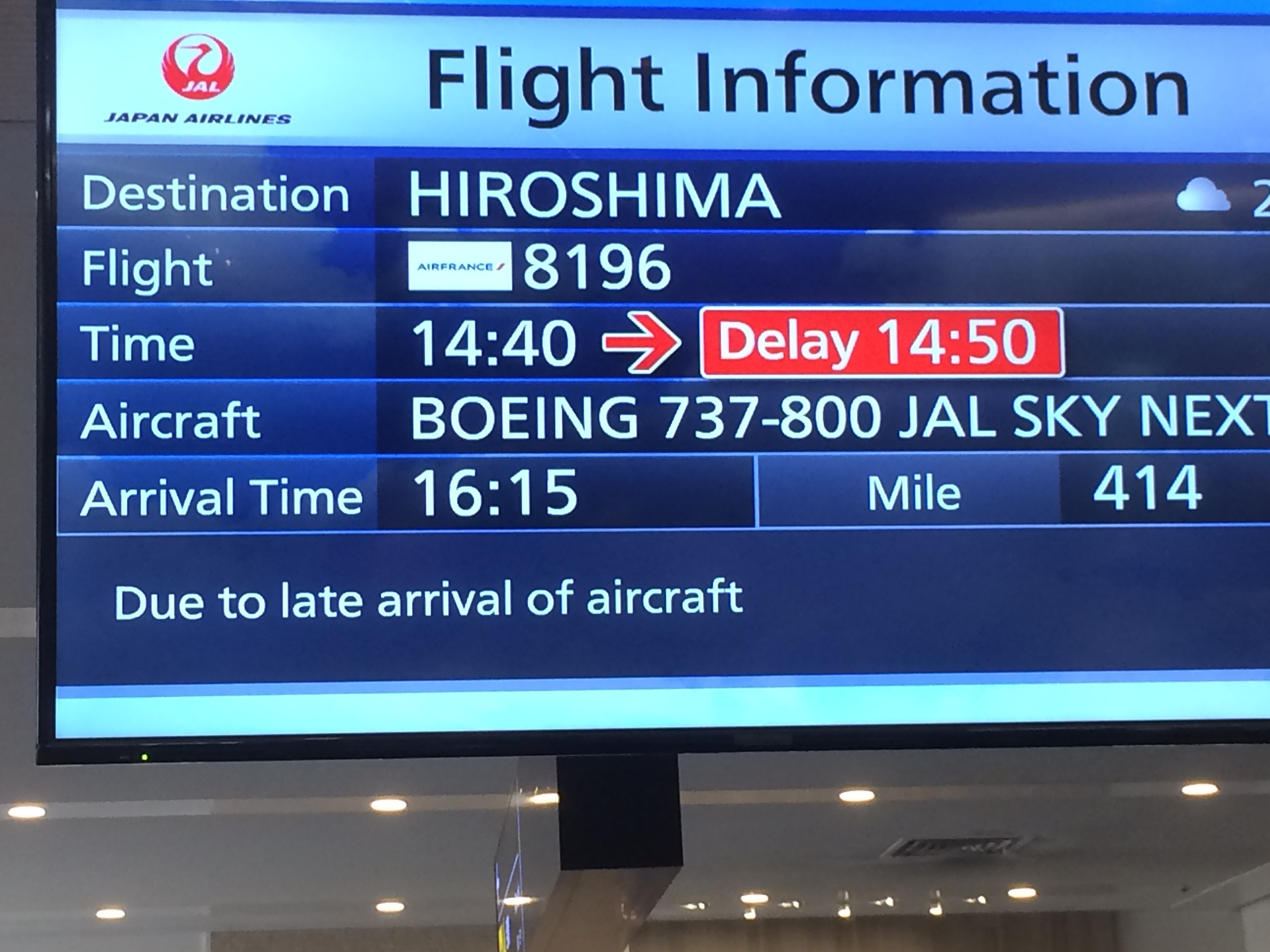
There were multiple things that impressed me about Boarding. The first is that the gate agent kept us updated informed as to the delay. No passenger today would have had any doubt or confusion about the delay situation. She accompanied every announcement with a bow at its start and finish. She must have bowed 20 times for our flight alone.

Next is that she clearly explained the boarding process in English and Japanese. which consisted of :
- The usual pre board for those who needed it
- Priority Board for Premium Passengers
- Those in the rear of the plane
- Those in the front.
The boarding process was illustrated on the overhead screen and on the sign board next to the gate. Why cannot other airlines copy this?
At each stage of the boarding process, she held a flip card which illustrated who was the next group to board leaving no doubt in anyone’s mind. There were a large number of Premium Passengers on this flight but I ducked on first!
Boarding is through a gate similar to a subway fare gate with passengers scanning the QR code on the boarding card.

At the aeroplane, the entrance was a selection of headphones, JAL brochures and newspapers.
A warm welcome was provided upon boarding. Cabin crew helped lift bags, something I have not seen on an airline for a long time.
Take off
We gunned out of Haneda. I felt that, in general, planes seemed to move around the airport and into the air at a faster speed than I am used to. Has anyone else seen that? We left the ground at 15:21, 41 minutes later than our scheduled 14:40 departure.

There was a momentary period of high wind as we left the runway which soundly shook the plane. We seen climbed into the smoother air. We entered the cloud layer which was punctuated by views of the top of Mount Fuji a few minutes later.
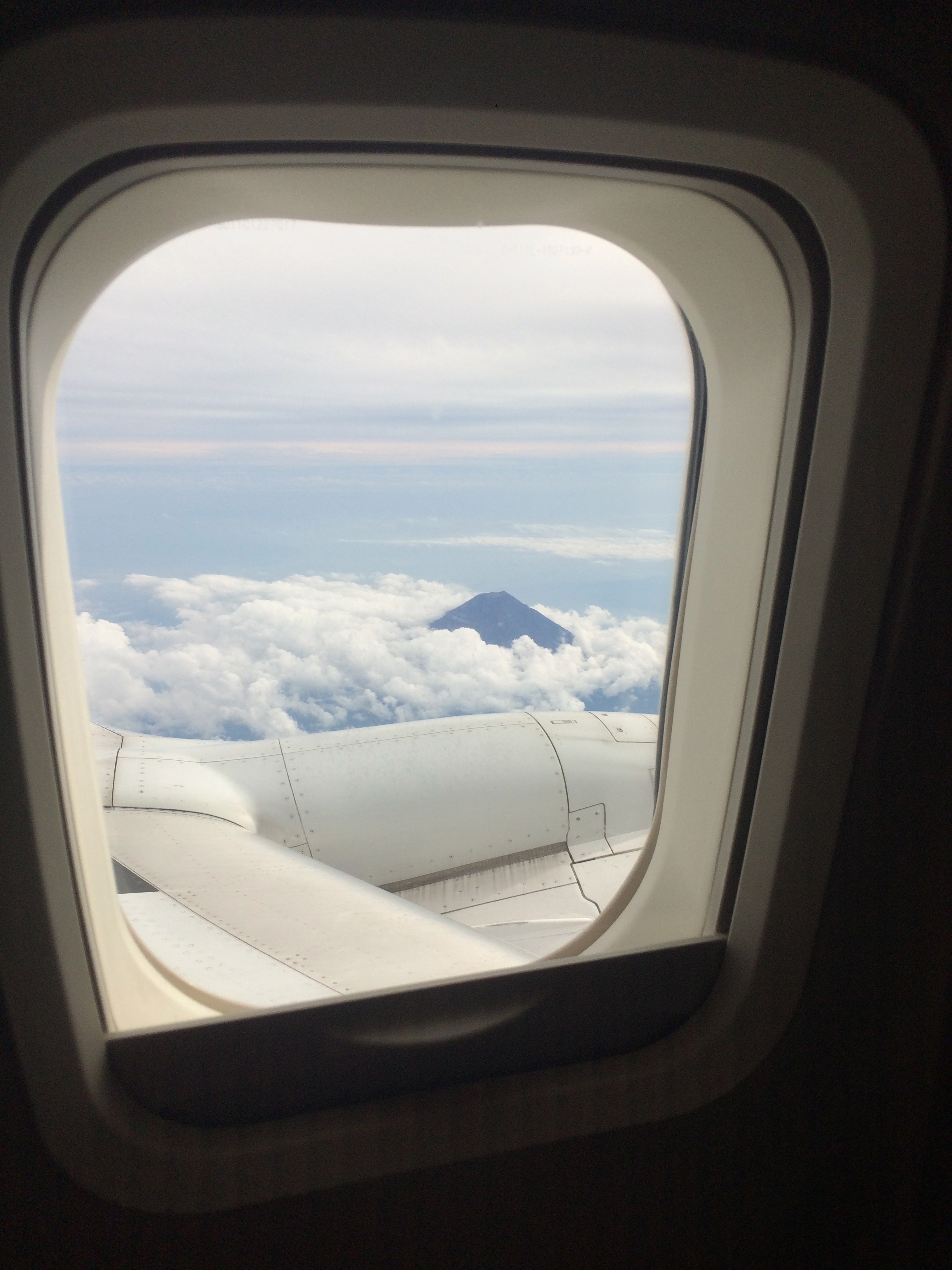

On Board 9/10
The 737 looked stunning. I was very impressed with the clean colours. The narrow Recaro seats looked great in black.
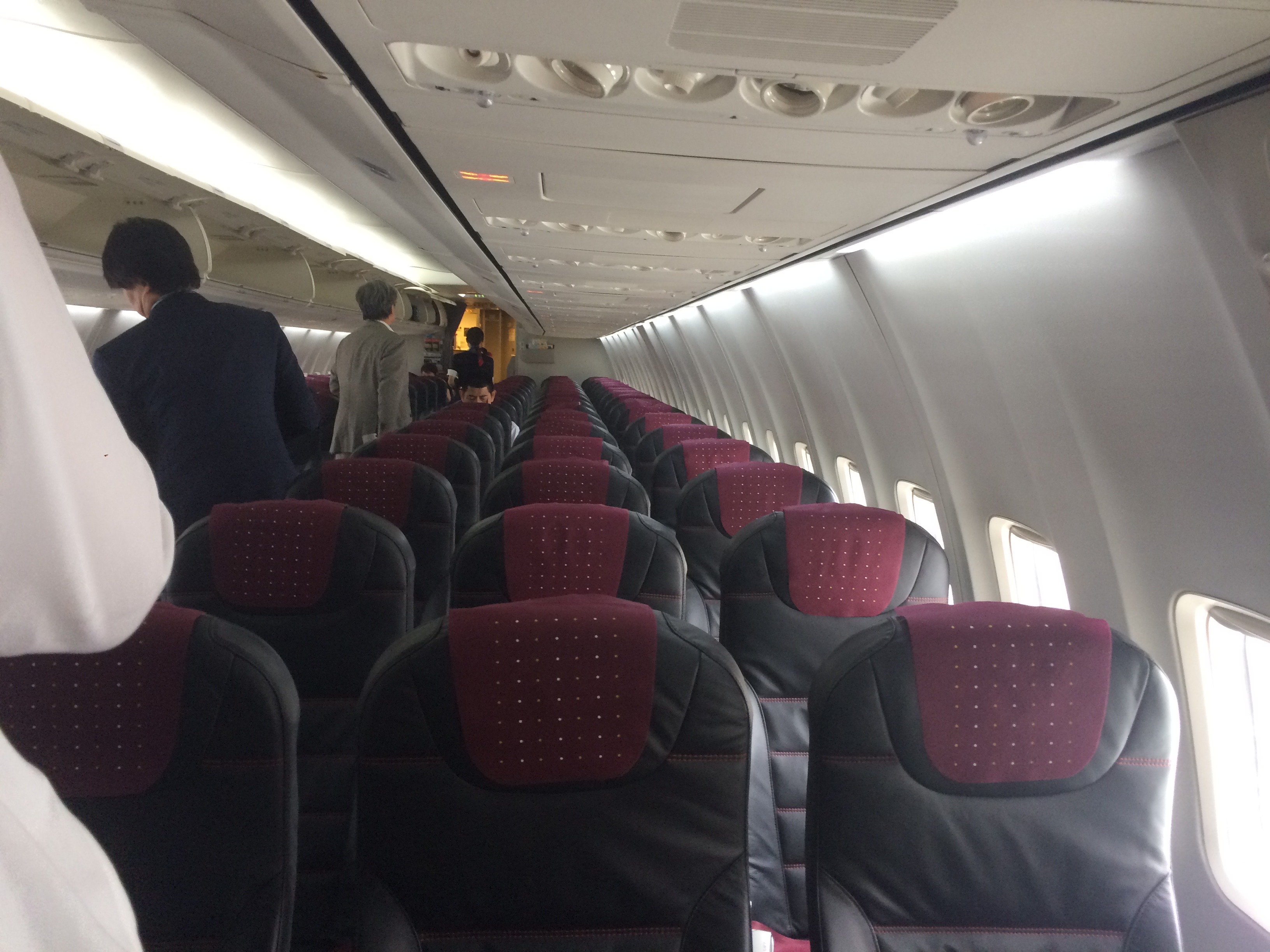
The plane is divided into two sections:
- J class a “lite” Business Class with 20 recliner style seats in four rows. It is the only time I have seen a 2-3 configuration in a 737 Business Class. There are two seats (AC) on the left side of the plane and three seats (HJK) on the right. Pitch is 38″ and width 18.5″
- 145 standard Economy seats with a seat pitch of 31″ and width of 17.3


 Four flight attendants were aboard.
Four flight attendants were aboard.
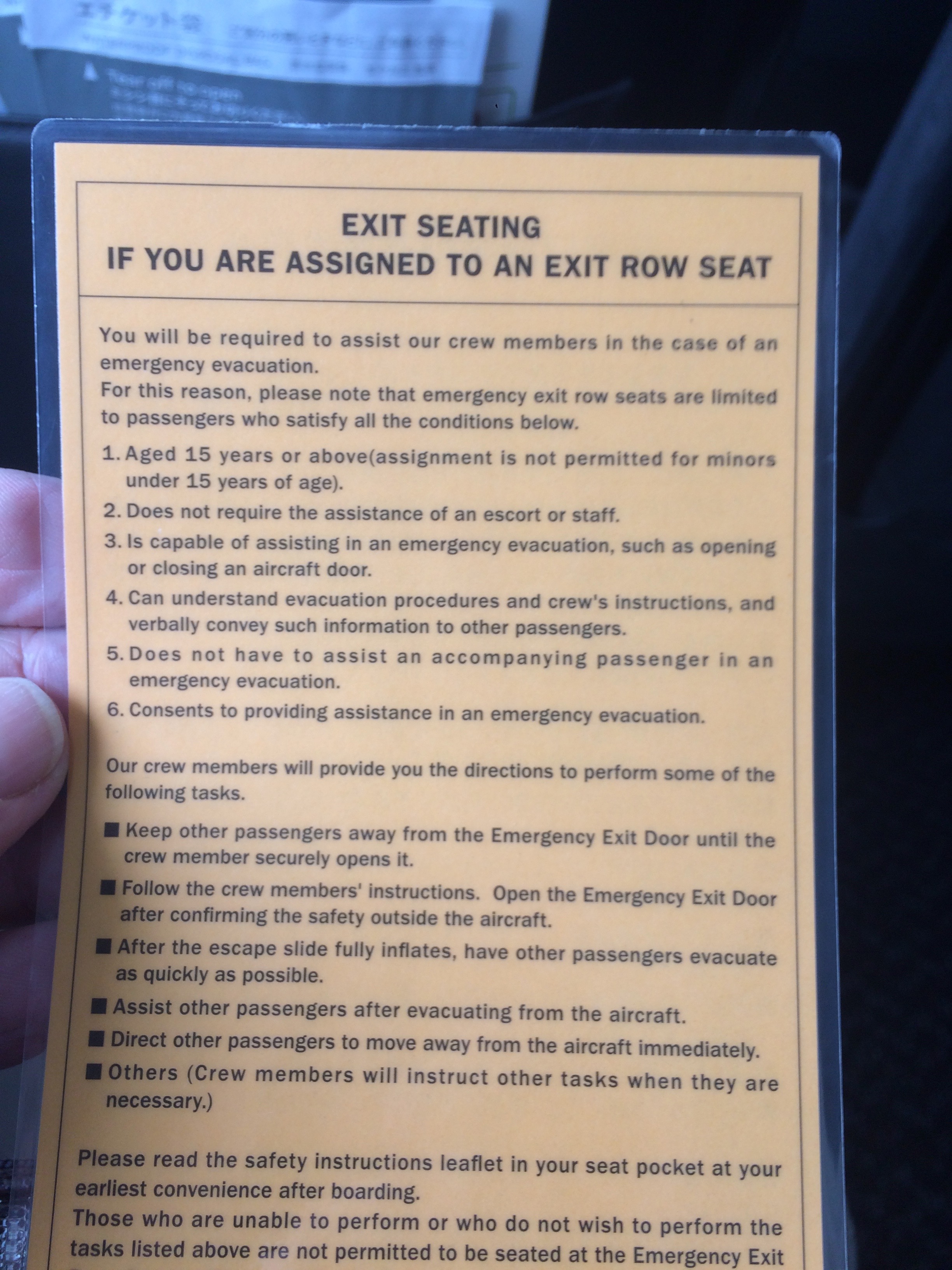
Most detailed Exit instructions I have ever seen!
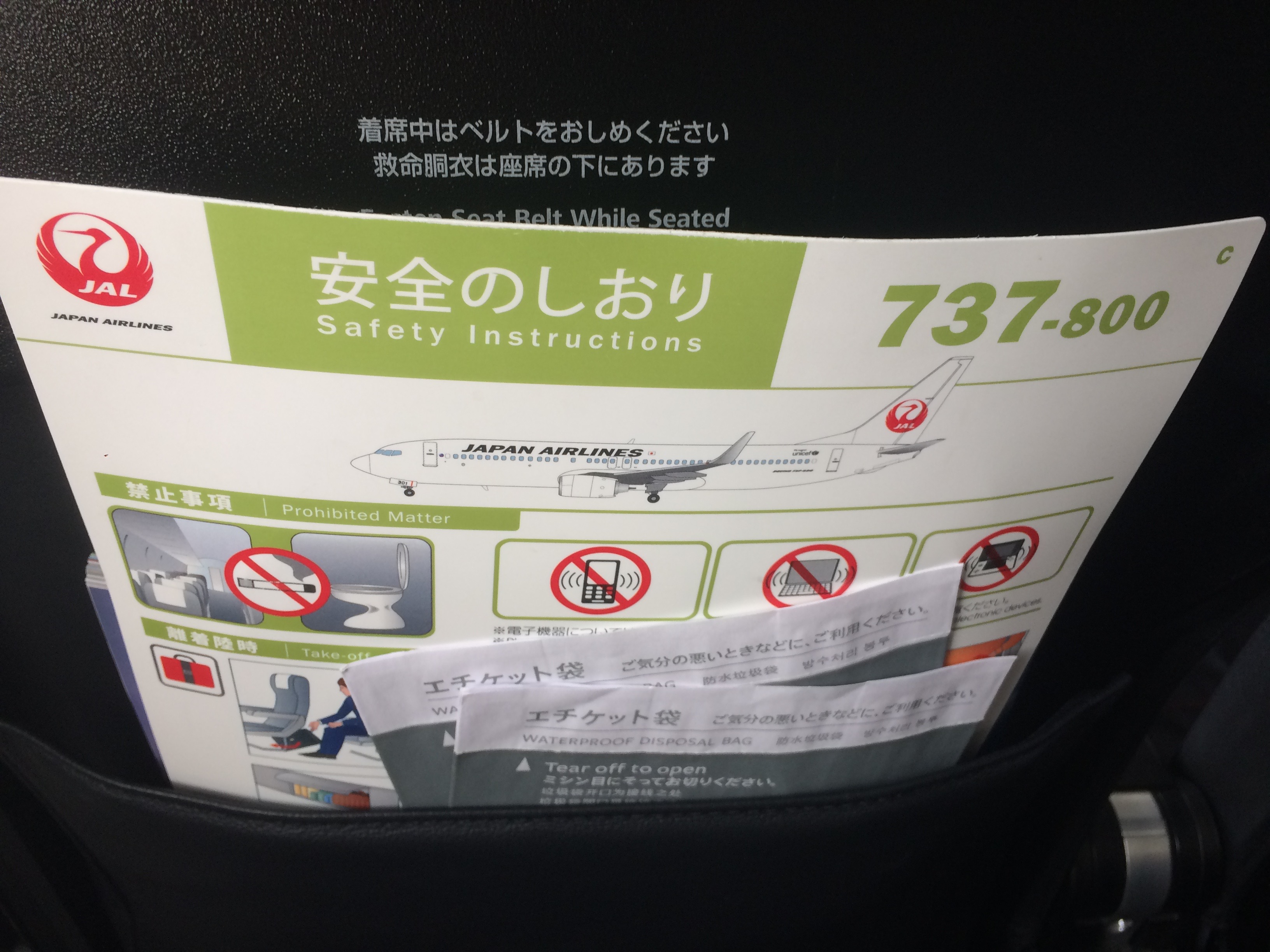
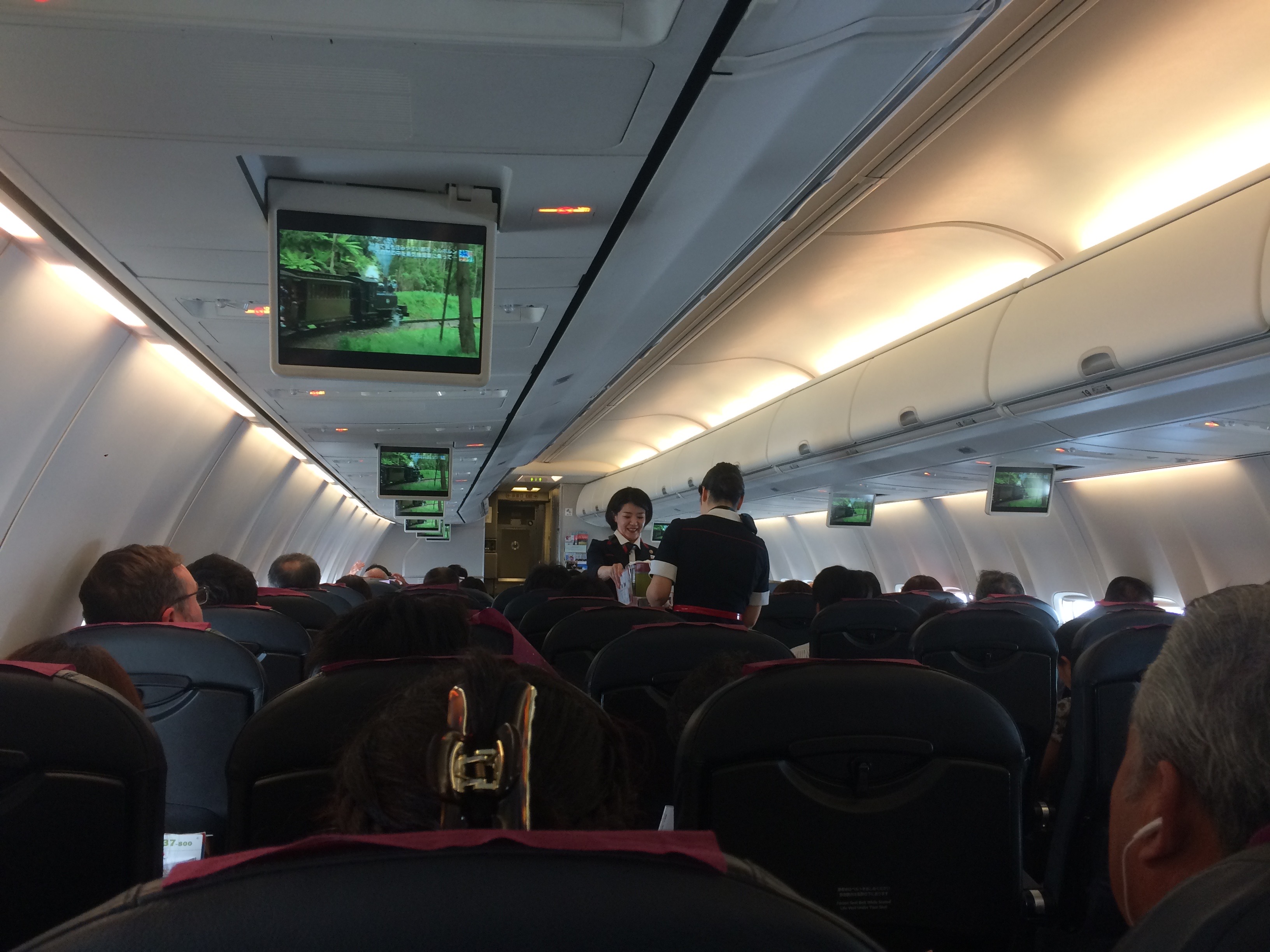
Meals: 3/10
This was a drinks only flight. One impressive innovation was the flight attendants had the drinks selection on a laminated card which they could hand to customers.
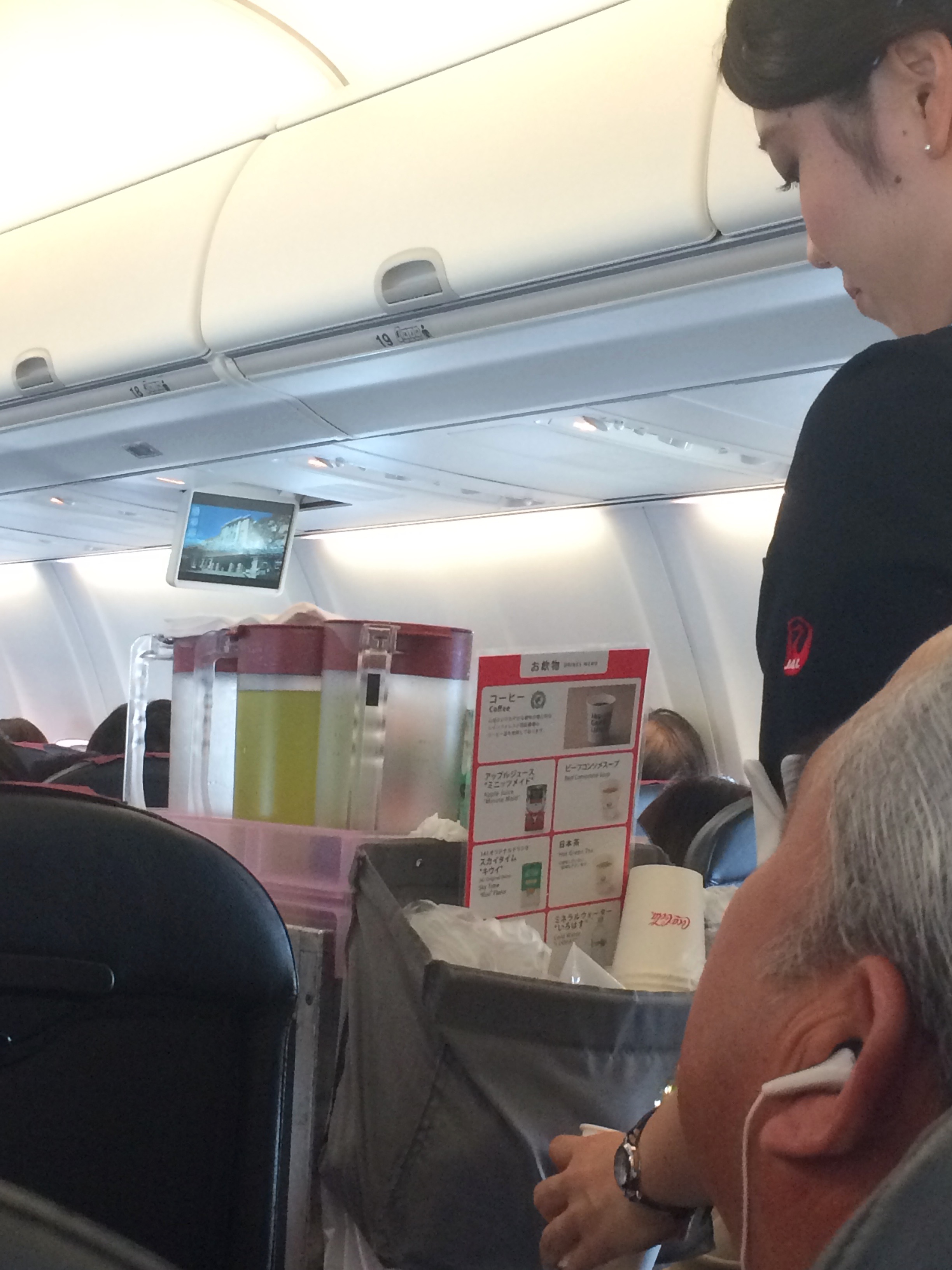 The drinks were listed in multiple languages allowing a customer to quickly point to their drink choice. Crew did not have to recite the drinks again and again. I have never seen this before. It works!
The drinks were listed in multiple languages allowing a customer to quickly point to their drink choice. Crew did not have to recite the drinks again and again. I have never seen this before. It works!
There were no snacks with the meals -even in Business Class.
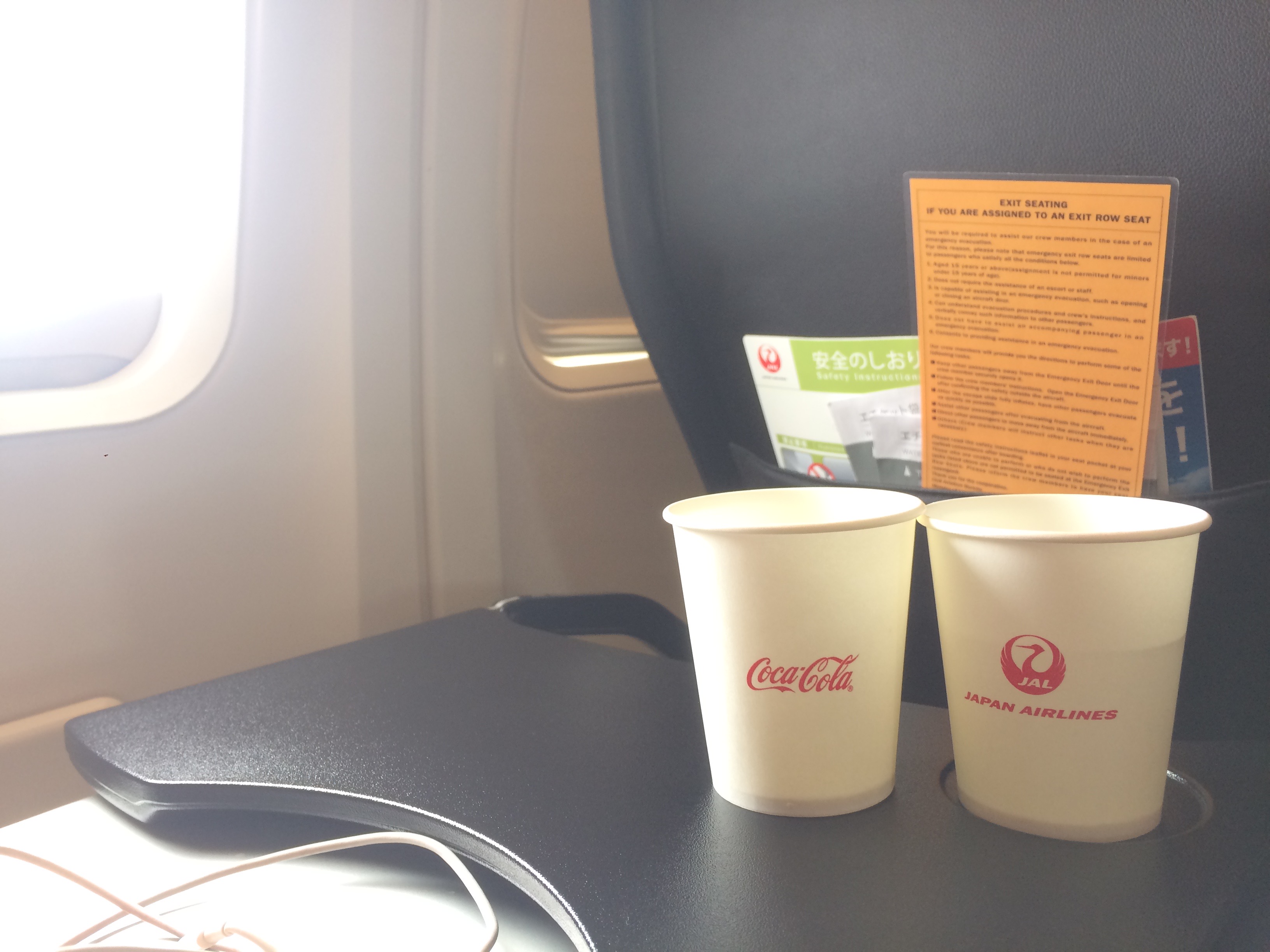

Entertainment 1/10
Headphones were passed out soon after takeoff by the crew. If I was planning to watch the overhead screens, I was to be sorely disappointed as the programming consisted only of Japanese language shows followed by stills of JAL safety messages.

There were a small number of radio channels with Western and Japanese options.
There are no power outlets on the plane which was a surprise. Every long-distance train in Japan seems to offer them automatically and I would assume the Shinkansen is JAL’s biggest domestic competition after ANA.
While JAL promises free wifi on its flights, the system was not working on this flight.
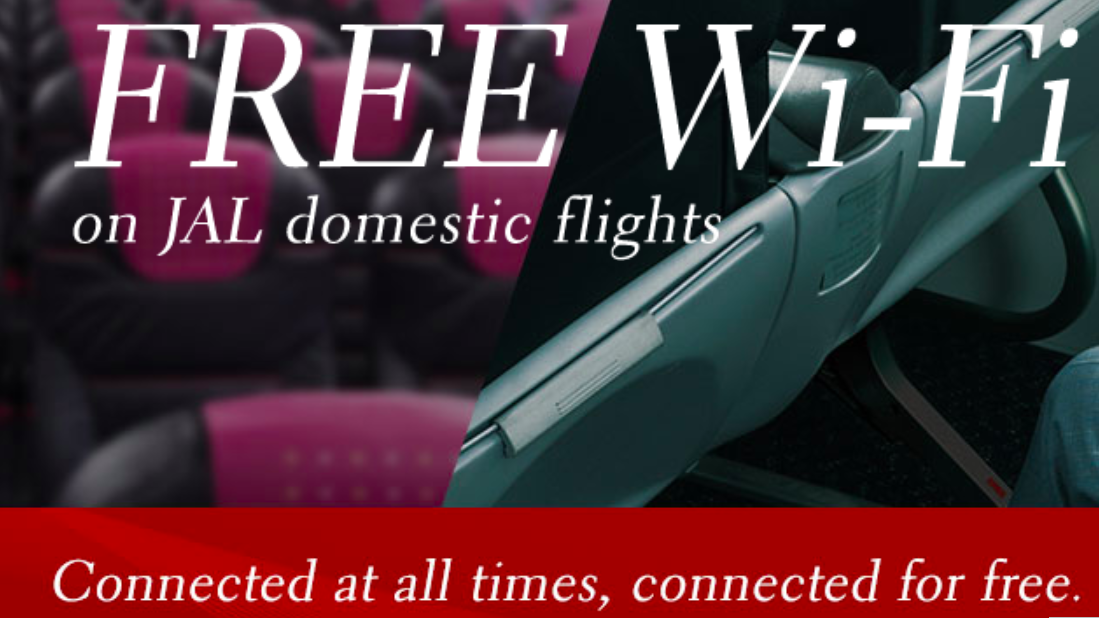
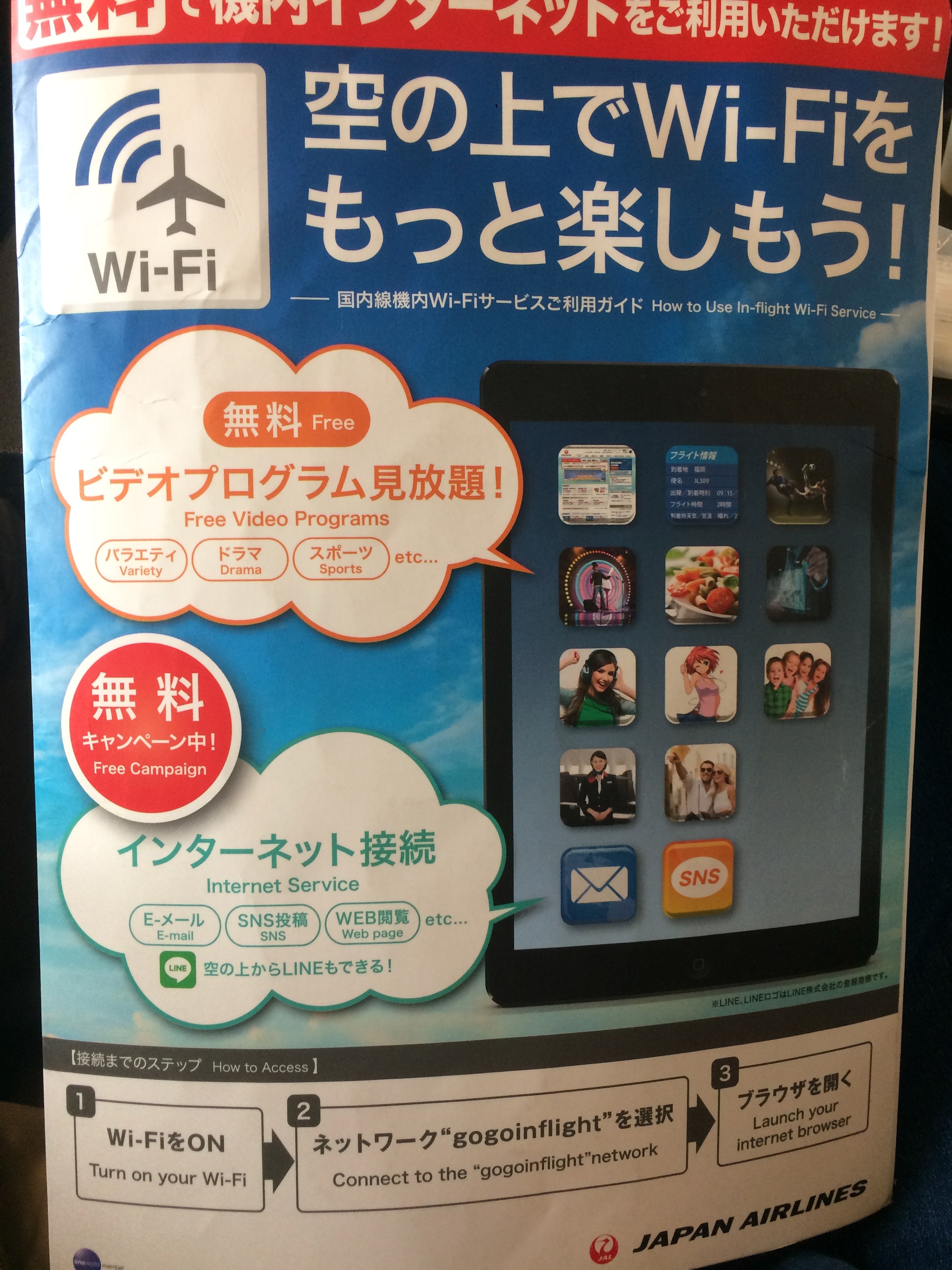 On the short flight, the cabin crew pushed the airline’s on board shopping options-twice.
On the short flight, the cabin crew pushed the airline’s on board shopping options-twice.
Landing
Despite our much later departure, arrival was a mere 19 minutes late. I did not see much of Hiroshima airport as we raced through the terminal to a waiting city bus!
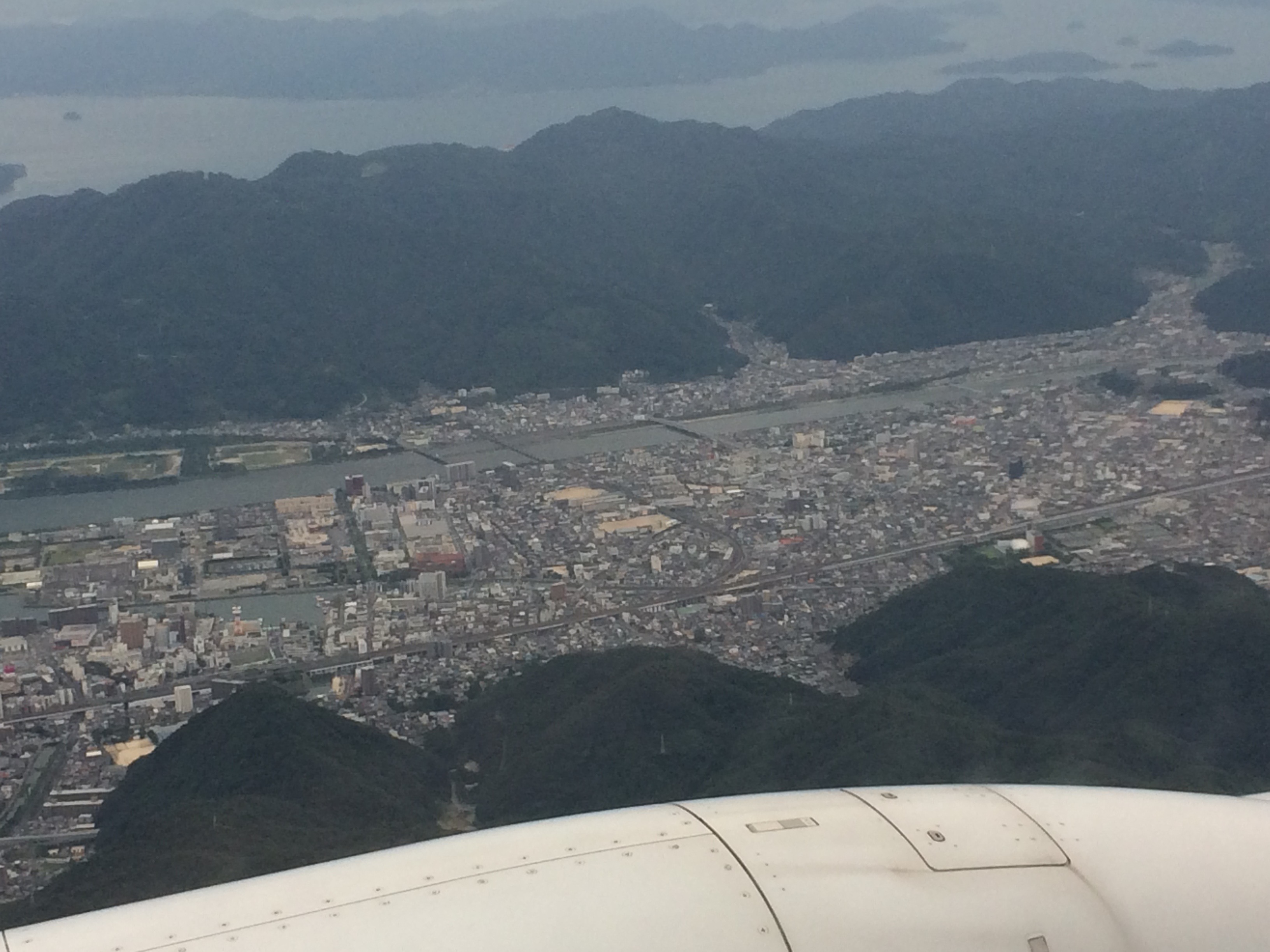
Flying in
The Verdict
My Flight Rating: 85%
About the Airline: Japan Air Lines Co was established in August 1951 by the Japanese government as a domestic carrier. They started international service in 1954.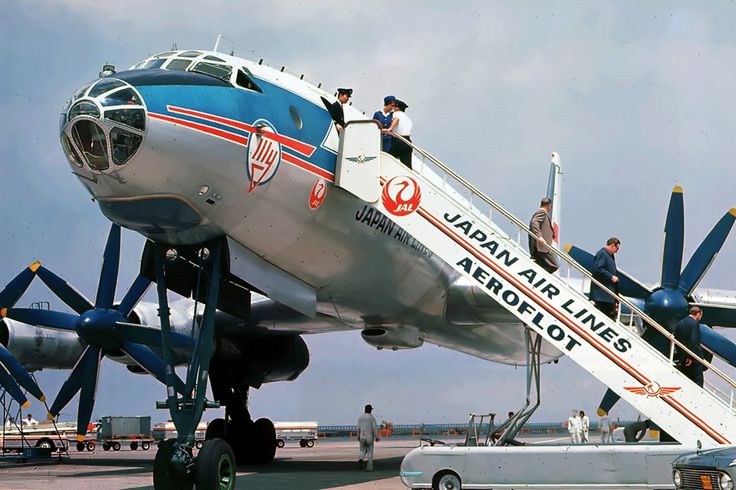 One fascinating route was from Tokyo to Moscow route between 1967 and 1969 which they jointly operated with Aeroflot from 19767 to 1969. Using a Tupelov TU 114, the flight crew included a JAL member. Plus half of the cabin crew on the flights were from JAL and the other half from Aeroflot.
One fascinating route was from Tokyo to Moscow route between 1967 and 1969 which they jointly operated with Aeroflot from 19767 to 1969. Using a Tupelov TU 114, the flight crew included a JAL member. Plus half of the cabin crew on the flights were from JAL and the other half from Aeroflot.
The airline enjoyed steady expansion until the 1990s when they their first encountered financial difficulties
Following September 11, 2001, JAL merged with Japan’s third largest airline: Japan Air System.
In 2009, the airline went bankrupt and was in bankruptcy protection until 2011.
Today their fleet of 162 connects 92 airports. JAL has been a member of One World since 2005.
Skytrax: Skytrax rates the as a four-star airline. Skytrax customers give them 8/10
Safety Rating: Airline ratings gives them 7 out of 7
Frequent Flyer Program: JAL Mileage Bank. One World customers can accumulate points with JAL. To my surprise, the discounted flight earned full economy points with my Qantas Frequent Flyer and they were credited within days.
Positive: Check in, Boarding, Drinks card
Negatives: Entertainment, lack of seat selection at booking, no wifi, drinks only srevice
Would I fly them again? Yes, I would like to try international flights and their 787!
*Of the 97 airlines I have flown, 63 are still flying and three are still flying but have had name changes. Two (Air Berlin and Alitalia) are in severe financial trouble. One (Air Zimbabwe) is still officially operating but should have been buried. Interestingly, the first airline I ever flew in May 1968, Loganair is still in the air!



Thank you for the informative post.
Hi there. As an ex JAL employee I am always interested to see articles about them and good to see that you enjoyed their service albeit on a domestic flight.
FYI you mention that the flight left 41 minutes late as you compared the departure time and take off time. Actually the departure time and delays are always calculated from when the plane pushes back from the parking stand. As the distance from the gates to the runway in nearly all airports will change daily depending on which runway is in use, how long the taxing is, how many planes ahead in the queue at the runway etc. the flight time which the captain mentions is of course time in the air but the official departure time is when plane starts to push back. Once the doors are closed and the cockpit advises ATC they are ready to go but are told to wait, then that is an ATC delay and the airline is not at fault. Their job is to get the passengers on and door closed as close as possible to the “departure time” on the tickets.